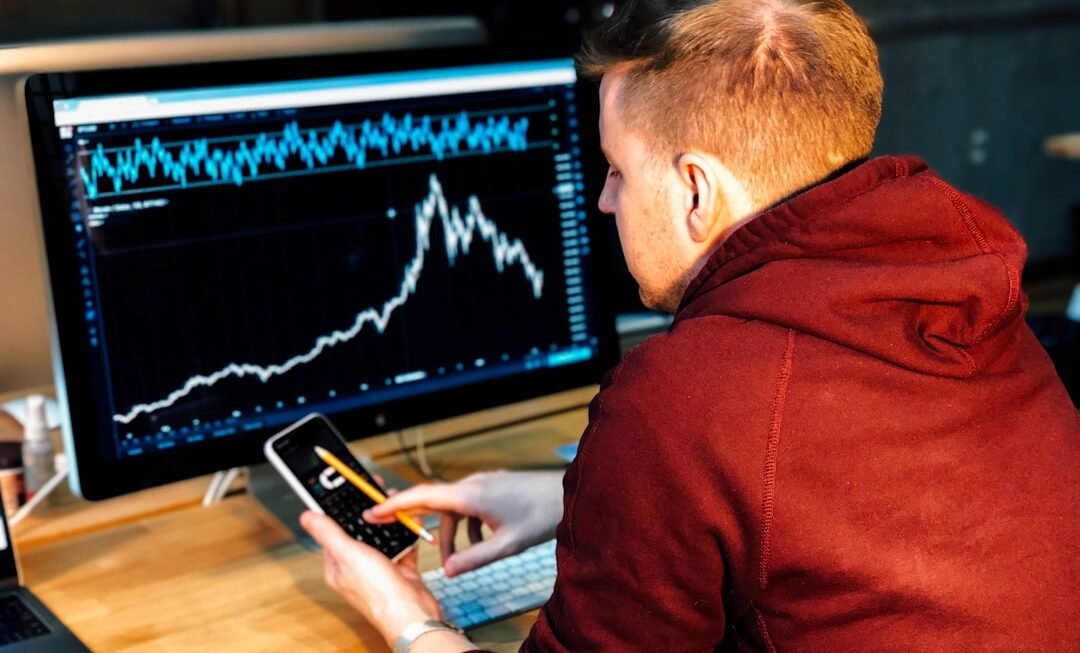Artificial Intelligence (AI) has transformed financial markets, including the forex market. AI’s capacity to rapidly analyze vast amounts of data surpasses human capabilities, making it a valuable tool for predicting market movements and informing trading decisions. In the volatile forex market, where currency values constantly fluctuate, accurate predictions can significantly impact a trader’s success.
AI offers traders a potential advantage by analyzing market data, identifying patterns, and making predictions based on historical and real-time information. AI in forex trading extends beyond automated trading systems. It encompasses machine learning algorithms, natural language processing, and deep learning techniques, all of which contribute to market data analysis and prediction.
These technologies have the potential to revolutionize forex trading strategies, providing traders with advanced tools to make more informed decisions and potentially improve their performance. This article will examine the various applications of AI in forex trading, including machine learning algorithms, natural language processing, and deep learning. It will discuss the advantages and limitations of using AI in this context, present case studies of successful AI predictions in the forex market, and explore the future of AI in predicting forex market movements.
The Use of Machine Learning Algorithms in Predicting Forex Market Movements
Machine learning algorithms have become increasingly popular in forex trading due to their ability to analyze large amounts of data and identify patterns that may not be apparent to human traders. These algorithms can be trained to recognize complex relationships between different variables, such as currency exchange rates, economic indicators, and market sentiment, and use this information to make predictions about future market movements. One of the key advantages of machine learning algorithms is their ability to adapt and improve over time as they are exposed to more data, making them valuable tools for predicting forex market movements.
There are several types of machine learning algorithms that are commonly used in forex trading, including supervised learning, unsupervised learning, and reinforcement learning. Supervised learning algorithms are trained on historical data with known outcomes, allowing them to make predictions based on this information. Unsupervised learning algorithms, on the other hand, are used to identify patterns and relationships in data without the need for labeled training data.
Reinforcement learning algorithms learn by trial and error, receiving feedback on their actions and adjusting their strategies accordingly. Each of these types of machine learning algorithms has its own strengths and weaknesses, and traders may choose to use a combination of these techniques to improve their predictive capabilities. Machine learning algorithms have the potential to significantly improve the accuracy of forex market predictions by analyzing large amounts of data and identifying complex patterns that may not be apparent to human traders.
By using these algorithms, traders can gain valuable insights into market trends and make more informed trading decisions. However, it is important to note that machine learning algorithms are not infallible and may still make incorrect predictions from time to time. Traders should use these tools as part of a comprehensive trading strategy and not rely solely on machine learning algorithms for making trading decisions.
The Role of Natural Language Processing in Analyzing Market News and Sentiment
Natural Language Processing (NLP) is another powerful tool that is being used in forex trading to analyze market news and sentiment. NLP involves the use of computer algorithms to analyze and interpret human language, allowing traders to extract valuable insights from news articles, social media posts, and other sources of market sentiment. By analyzing this information, traders can gain a better understanding of market trends and make more informed trading decisions.
One of the key challenges in using NLP for forex trading is the sheer volume of unstructured data that is available. There are millions of news articles, social media posts, and other sources of market sentiment that are published every day, making it impossible for human traders to analyze this information manually. NLP algorithms can process this data at scale, identifying key themes and sentiments that may impact currency values.
By analyzing this information, traders can gain valuable insights into market sentiment and make more informed trading decisions. NLP algorithms can also be used to analyze the tone and sentiment of news articles and social media posts, providing traders with valuable insights into market sentiment. By analyzing this information, traders can gain a better understanding of how market participants are feeling about certain currency pairs or economic indicators, allowing them to make more informed trading decisions.
NLP has the potential to provide traders with a competitive edge by allowing them to stay ahead of market trends and make more informed trading decisions.
The Impact of Deep Learning in Analyzing Forex Market Data
Deep learning is a subset of machine learning that involves the use of artificial neural networks to analyze complex patterns in data. In forex trading, deep learning techniques can be used to analyze vast amounts of market data and identify patterns that may not be apparent to human traders. Deep learning algorithms can be trained on historical market data to recognize complex relationships between different variables, such as currency exchange rates, economic indicators, and market sentiment, and use this information to make predictions about future market movements.
One of the key advantages of deep learning in forex trading is its ability to analyze unstructured data, such as news articles and social media posts, which may contain valuable insights into market sentiment. Deep learning algorithms can process this data at scale, identifying key themes and sentiments that may impact currency values. By analyzing this information, traders can gain valuable insights into market sentiment and make more informed trading decisions.
Deep learning techniques have the potential to significantly improve the accuracy of forex market predictions by analyzing large amounts of unstructured data and identifying complex patterns that may not be apparent to human traders. By using these techniques, traders can gain valuable insights into market trends and make more informed trading decisions. However, it is important to note that deep learning techniques are not infallible and may still make incorrect predictions from time to time.
Traders should use these tools as part of a comprehensive trading strategy and not rely solely on deep learning techniques for making trading decisions.
The Advantages and Limitations of Using Artificial Intelligence in Forex Trading
The use of artificial intelligence in forex trading offers several advantages, including the ability to analyze vast amounts of data at speeds that are impossible for humans to match. AI can also identify complex patterns in data that may not be apparent to human traders, providing valuable insights into market trends and sentiment. Additionally, AI has the potential to improve the accuracy of forex market predictions by analyzing large amounts of historical and real-time data.
However, there are also limitations to using artificial intelligence in forex trading. AI algorithms are not infallible and may still make incorrect predictions from time to time. Additionally, AI systems may be susceptible to biases in the data they are trained on, which can impact the accuracy of their predictions.
Traders should use AI as part of a comprehensive trading strategy and not rely solely on AI for making trading decisions.
Case Studies of Successful AI Predictions in the Forex Market
There have been several notable case studies of successful AI predictions in the forex market. For example, a hedge fund used machine learning algorithms to analyze vast amounts of market data and identify profitable trading opportunities. By using these algorithms, the fund was able to achieve significant returns on investment and outperform traditional trading strategies.
Another example is a financial institution that used natural language processing algorithms to analyze news articles and social media posts for insights into market sentiment. By using these algorithms, the institution was able to gain valuable insights into market trends and make more informed trading decisions. These case studies demonstrate the potential for AI to revolutionize the way traders approach the forex market by providing them with powerful tools for making more informed decisions.
The Future of Artificial Intelligence in Predicting Forex Market Movements
The future of artificial intelligence in predicting forex market movements looks promising. As AI technologies continue to advance, traders will have access to even more powerful tools for analyzing market data and making predictions. For example, advancements in deep learning techniques may allow traders to analyze even larger amounts of unstructured data for valuable insights into market sentiment.
Additionally, as AI technologies become more sophisticated, they may be able to identify complex patterns in data that are currently beyond the capabilities of human traders. This could provide traders with even more accurate predictions about future market movements. Overall, the future of artificial intelligence in predicting forex market movements looks bright, with AI technologies continuing to provide traders with powerful tools for making more informed decisions.
As these technologies continue to advance, traders will have access to even more powerful tools for analyzing market data and making predictions about future market movements.












